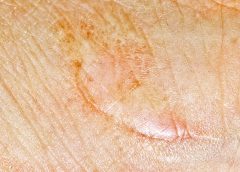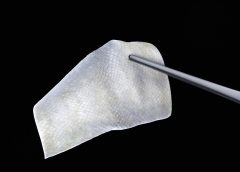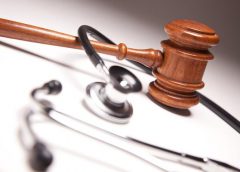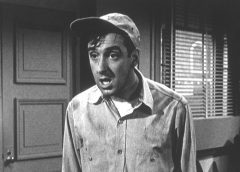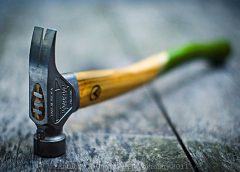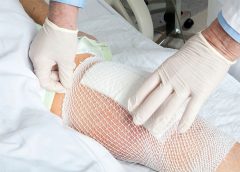Scars are a particularly sore subject for most people. Not only are they aesthetically unpleasing, but some of them can prove painful. That’s why research into minimizing the appearance of scars continues to be a central priority of wound care-related research. In the last several months alone, there have been quite a few exciting such breakthroughs. (more…)
Read MoreSearch Results for: why
Antibiotic use in pressure injury infections
Antibiotic overuse contributes to the problems of antibiotic resistance and healthcare acquired infections, such as Clostridium difficile. Antibiotic stewardship programs improve patient outcomes, reduce antimicrobial resistance, and save money. These programs are designed to ensure patients receive the right antibiotic, at the right dose, at the right time, and for the right duration. (more…)
Read MoreDragon blood may help wounds heal faster
A new study has identified a peptide, derived from the Komodo dragon, called VK25, which can be synthesized and used as an antimicrobial peptide to promote wound healing.
The new research has identified (see below) a peptide found from the Komodo dragon (Varanus komodoensis), called VK25, which appears to be useful as a cationic antimicrobial peptide (CAMP). There is currently considerable interest in antimicrobial peptides in a world where antibiotic effectiveness is in decline. These peptides are potent, broad spectrum antibiotics which demonstrate potential as novel therapeutic agents. (more…)
Read MoreFish Skin for Human Wounds: Iceland’s Pioneering Treatment
The FDA-approved skin substitute reduces inflammation and transforms chronic wounds into acute injuries.
Six hours north of Reykjavik, along a narrow road tracing windswept fjords, is the Icelandic town of Isafjordur, home of 3,000 people and the midnight sun. On a blustery May afternoon, snow still fills the couloirs that loom over the docks, where the Pall Palsson, a 583-ton trawler, has just returned from a three-day trip. Below the rust-spotted deck, neat boxes are packed with freshly caught fish and ice. “If you take all the skins from that trawler,” says Fertram Sigurjonsson, the chairman and chief executive officer of Kerecis Ltd., gesturing over the catch, “we would be able to treat one in five wounds in the world.” (more…)
Read MoreContributing to this website
Share your wound care insights and knowledge through WoundCareAdvisor.com
Consider contributing pertinent, useful information that health care professionals can utilize in the wound care practices
Sometimes we all think “It would be great to share this information with my peers”. WoundCareAdvisor.com invites you to do just that. . .share best practices, interesting case studies, practice information such as assessment techniques or documentation tips and more through our popular website. (more…)
Read MoreEducational Webinars
Think a Patient Has Rights? They Left.
by Dr. Michael Miller
There are few absolutes in my universe. I know that my youngest daughter will gleefully and with full malice (but humorously presented) find something to torment me about every time I see her; referrals from family practice docs arrive well marinated in multiple antibiotics with nary a diagnosis in sight (save for the ubiquitous “infection”); and that regardless of what I recommend, offer, beg, plead, or cajole, that the patient has the complete and total power to make their decisions regarding their care and who provides it. Unless they are deemed by multiple authorities to be incapable of making a decision, until the appropriate paperwork or an emergency situation exists mandating immediate lifesaving action, the ball bounces squarely in their court…or so I thought. (more…)
Read MoreJim Nabors Would Just Cry
by Dr. Michael Miller
For those of you not as familiar with the Hoosier State as you should be, I used to think it was essentially paradise. Jim Nabors of Gomer Pyle fame is our ubiquitous, tuneful icon with his always well-received “Back Home in Indiana” as a mantra to that source of pride. Our former Governor “My Man” Mitch Daniels was a genius who, using a combination of intelligence, common sense and the persuasive powers of a midwest Svengali, created an economic model that our neighbors can only lust after. Our medicolegal climate is among the best in the US and well it should be. However, while there are some extraordinary caregivers and facilities here, a recent US News and World Report curiously showed that almost none of our hospitals made their “Best of” lists in any category. That is not to say there is bad care but to not have a single facility in an entire state even achieve an honorable mention gives one pause to reflect. The State newspapers were notoriously quiet on this concerning fact despite their trumpeting of who does what well, when and where. (more…)
Read MoreHole-ier than Thou, Evidence Based Regardless of the Evidence
by Dr. Michael Miller
There are certain phrases that make the hair on the back of my neck stand up. Someone telling me that they are a good Jew, a good Christian, a good Muslim or the ultimate in self serving lies, “I ONLY practice EVIDENCE BASED MEDICINE”. People who are what they claim they are do not need to announce it. A short conversation, watching them work, others opinions about them all answer the question before it is asked. Like the RN who asked for a recent presentation on the true science behind NPWT (no, you don’t really understand it). She made sure to tell me not only that she practiced only EVIDENCE BASED MEDICINE but then gave me several examples which incidentally had absolutely no scientific evidence (save for articles from lots of dabblers doing lots of crazy things to people and writing about them). I am now awaiting her response as she may have to realize that her version of EVIDENCE BASED is no more real than Kim Kardashian’s celebrity. (more…)
Read MoreIf All You Have is a Hammer, What Happens When You Run Out of Nails?
by Dr. Michael Miller
Over the years of making house calls for wound care, I found that there was a real need for home based mental health and behavioral care, palliative care, podiatry and lots of other things. We cater to those who are home bound based on the classic definition involving the word “Taxing”. One of the more prevalent problems affecting all patients involves the nebulous but ubiquitous, nerve jangling, aptly named, “5th Vital Sign”, namely pain. As a part of my medical group, we have created a program that provides pain management not just to the home bound but all those whose lives and lifestyles are affected adversely by it. The program is a monument to government bureaucracy involving multiple layers of paperwork, mental health evaluations, testing of bodily fluids for both illegal and legal substances and then, the actual evaluation of the patient commences. After all hurdles are vetted and then jumped, then and only then does a prescription for the appropriate nostrum leave the pad. In wound care, we treat based on the etiology, the location, the related factors, the amounts of drainage, the surrounding tissues and so on, ad nauseum. Not surprisingly, in pain management, the scenario is much different. In wound care the mantra of the dabbler is see the hole, fill the hole. In pain management, the goal is to minimize pain to maximize functionality but the overriding questions are how this is accomplished. (more…)
Read MoreHelp Me, Help Me, Help Me…next Tuesday
by Dr. Michael Miller
Health care providers are by nature an altruistic bunch. I have the honor of interviewing potential entries to my beloved profession as part of the admissions process at the newest Osteopathic Medical School in Indiana, Marian University. The process is unique in that it does not simply ask the age old questions of “Why you want to be a physician ?”, (“Because I want to do primary care in a rural area”). No, our probing involves scenarios in which they have to look at a social situation, identify their thoughts, those of the opposing views and then cohesively demonstrate intelligence, confidence, logical thought processes and humanity…all in an 8 minute period repeated 7 times. Their responses juxtaposed against what I see in my day to day always gives me pause to think about how the practice of medicine has been so perverted by the promotion of self abdication of responsibility. The “let your government do it for you” mantras and newest politically correct definitions of disabled (encompassing everything from melancholia to dislike of red M and M’s) have resulted in a major paradigm shift in medicine. Whereas, the hospitals once touted their ability to heal all manner of maladies, they now recognize their cost ineffectiveness, more detrimental than beneficial care (just check the nutritional parameters of anyone pre and post hospitalization) and the downright danger of going to one, unless you are a burgeoning superbug. (more…)
Read MoreAlternate universes – Einstein’s insanity
I remain absolutely amazed that there are so many people doing the same thing and yet doing it so completely different. Depending on where a patient’s wound care and orders originate from, the care I try to translate from that starting point is always a combination of dressing regimens worthy of computer code in their simplicity. The only thing usually missing is the diagnosis. It’s as though they come from an identical planet in an alternate universe.
The issue is that there is the complete dissociation of what is done for a given wound care problem in one practice setting versus another. Having stayed as far away from hospital-based wound care as possible, I continue to be amazed by hospital wound teams touting their expertise while using two to three times a day dressing changes and therapies that are the antithesis of any identifiable evidence. They actually expect entities receiving their cases (including home healthcare agencies, LTAC, skilled facilities, and others) to copy the identical care scenario regardless of their widely variable situations. In fact, the only constant is the patient and his or her condition. (more…)
Read More
